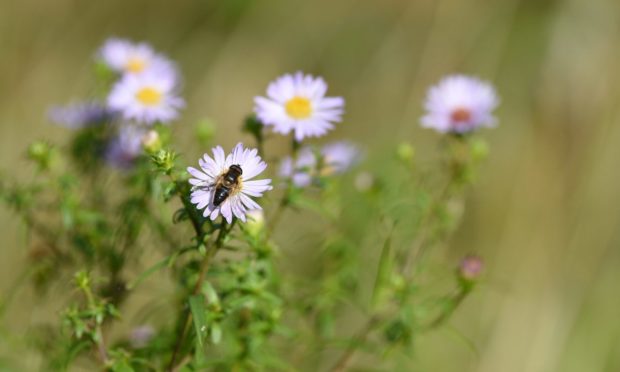Citizen scientists are being encouraged to capture any sightings of bees as part of World Bee Day and log them in an app.
The Spot-a-Bee app was developed by the school of education at Glasgow University and the school of pharmacy at Cardiff University.
It allows users to submit photos of bees they spot while out and about, as well as to log the plants that attract them and to plot a map of plant distribution.
This data is useful for conservation efforts, as it helps us to better understand the plants bees like and hopefully encourage the planting of more bee-friendly habitats.
Hey spotters!
Here are our top 5 spots for 2020/21 so far! Dandelion came on top with 351 spots! Then we had Lavender with 284, Wild Blackberry at 244, White clover with 190 and finally Perennial geraniums with 140.
Is this what you expected? Let us know in the comments 🙂 pic.twitter.com/asJUQFULBQ— Spot-a-Bee (@ISpotABee) May 14, 2021
More than 8,000 bee sightings recorded in 2020
Dr Ria Dunkley, a lecturer at Glasgow University, said: “The pandemic has helped many of us realise just how important outside space is as well as how important it is for us to connect with the nature in our local area. We’re always looking for more people to join us so as restrictions ease across the UK we are inviting everyone to get involved and download the app.”
NatureScot is also making creating bee-friendly habitats a priority. Their Pollinator Strategy for Scotland has resulted in 30 organisations across the country coming together to create hotspots in towns, cities and rural areas.
In 2020 over 8,000 bees were logged on the Spot-a-Bee app. This year the founders are hoping for even more as new species are still being discovered.
The app also allows bee fans to be part of a bee spotting community, and to share their findings with other users.
Ms Dunkley said: “We had a great response after launching last year and have received over 8,000 spots from citizen scientists all over the world. The Spot-a-Bee app also allows you to become part of the Spot-a-Bee community where you can comment on other spot records and explore the map to see what bees others are spotting.”
Some spots from over the easter weekend 🐝 pic.twitter.com/THlPTYU20B
— Spot-a-Bee (@ISpotABee) April 6, 2021
The app can be downloaded for free from the App Store or Google Play. There are also learning resources available for any budding bee spotters.
